The Feria de Albacete - over 3 Million visitors in 2024
Saturday, September 21, 2024
Nestled in the heart of Spain, Albacete becomes an epicentre of colour, culture, and celebration come September. La Feria de Albacete, a festivity steeped in tradition and exuberance, draws visitors from all corners of the world, eager to witness and partake in its vibrant offerings. But what are the origins of this much-anticipated event, and what can attendees expect? Let's delve into the rich history and multifaceted content of La Feria de Albacete to reveal why it's considered one of Spain's must-experience festivities.
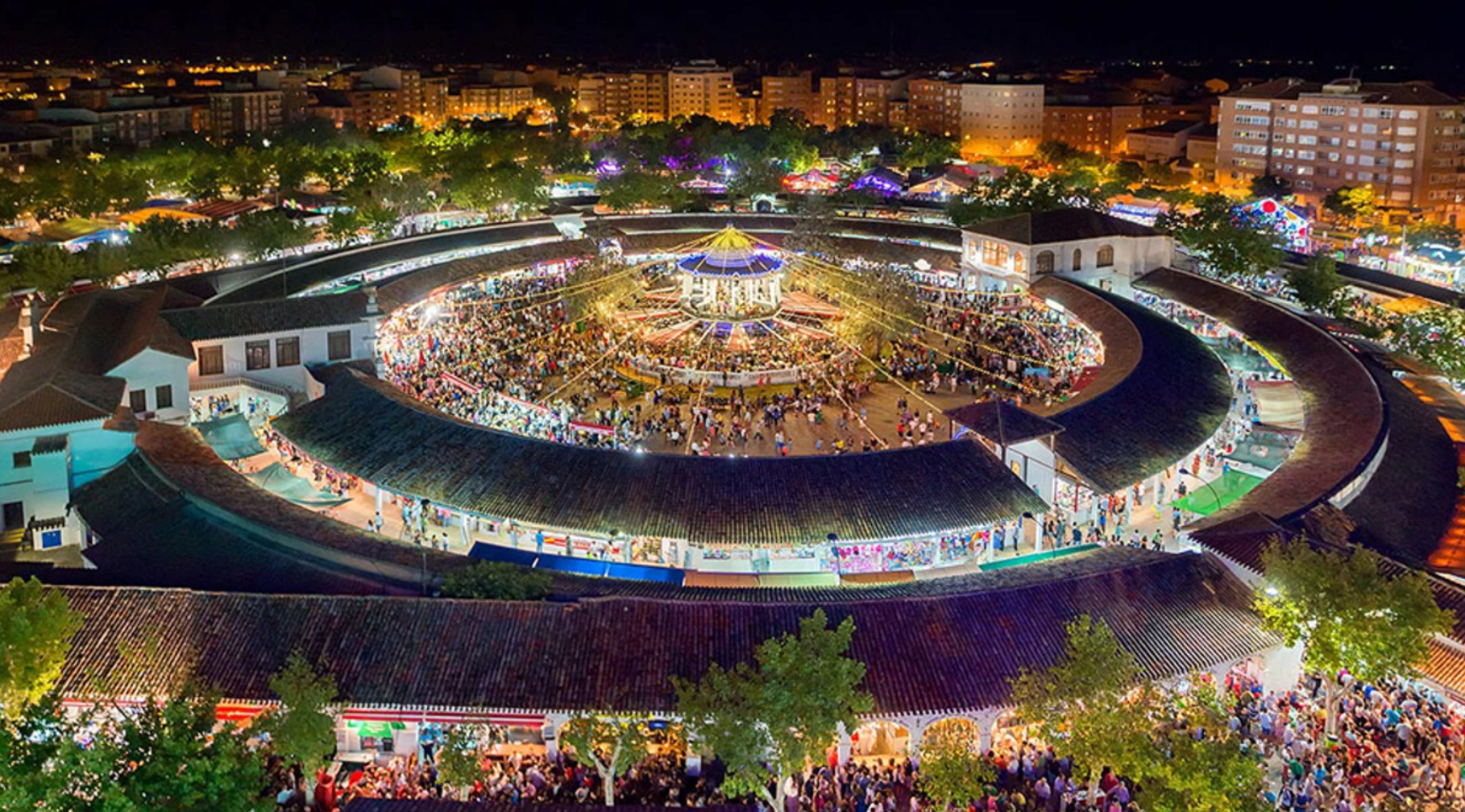
The Feria de Albacete traces its roots back to the 13th century, specifically to the year 1200. It was originally established by the privilege of the royal charter granted by King Alfonso VIII of Castile, designed to boost local trade and agriculture. However, the fair as we know it today, with its blend of cultural, social, and economic gatherings, began to take shape in the 18th century.
The festival, traditionally held from the 7th to the 17th of September, coincides with the feast of the Virgin of Los Llanos, the patron saint of Albacete. This coincidence is not accidental; the religious aspect deeply intertwines with the fair's historical customs and practices, adding a spiritual dimension to the celebrations.
La Feria de Albacete and what to expect
Vibrant Parades
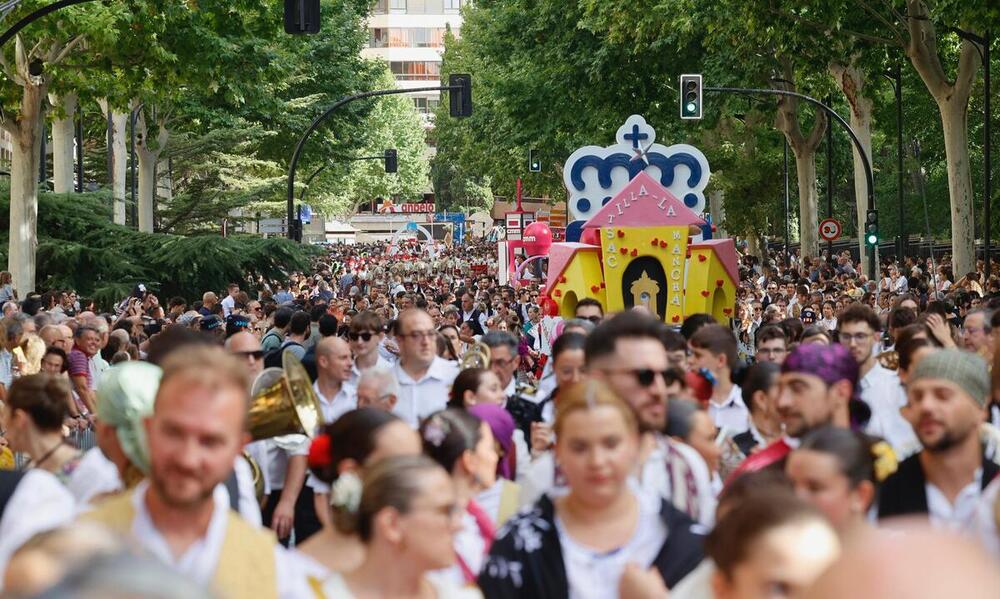
The opening of La Feria is marked by the 'Cabalgata de Apertura,' a grand parade that weaves through the city streets, signalling the start of ten days of ceaseless festivities. Colourful floats, traditional folk music bands, and dancers in elaborate costumes captivate both locals and tourists, setting the tone for what's to come.
A Cultural Mosaic
At the heart of La Feria is the 'Recinto Ferial,' (pictured above) the fairground located within the city. Once there, attendees can immerse themselves in a cultural mosaic that showcases the region’s heritage through music, dance, and regional cuisine. From the pulsating rhythms of flamenco to the taste of manchego cheese and the sight of artisan craftwork, the fairground offers something for every palate and interest.
Bullfighting
Bullfighting is an integral part of La Feria, attracting aficionados to the Plaza de Toros de Albacete, one of the city's landmarks. These events feature some of Spain's top toreros and bulls, providing a spectacle that remains a deeply ingrained tradition in the local culture.
 - Copy 1.jpeg)
Concerts and Nightlife
As the sun sets, La Feria de Albacete transforms into a hub of nocturnal activity. National and international artists take the stage, offering a variety of concerts that cater to a wide range of musical tastes. Simultaneously, the fairground and surrounding areas teem with life, as bars and temporary stalls serve up local beverages and snacks, fostering a communal atmosphere well into the early hours.
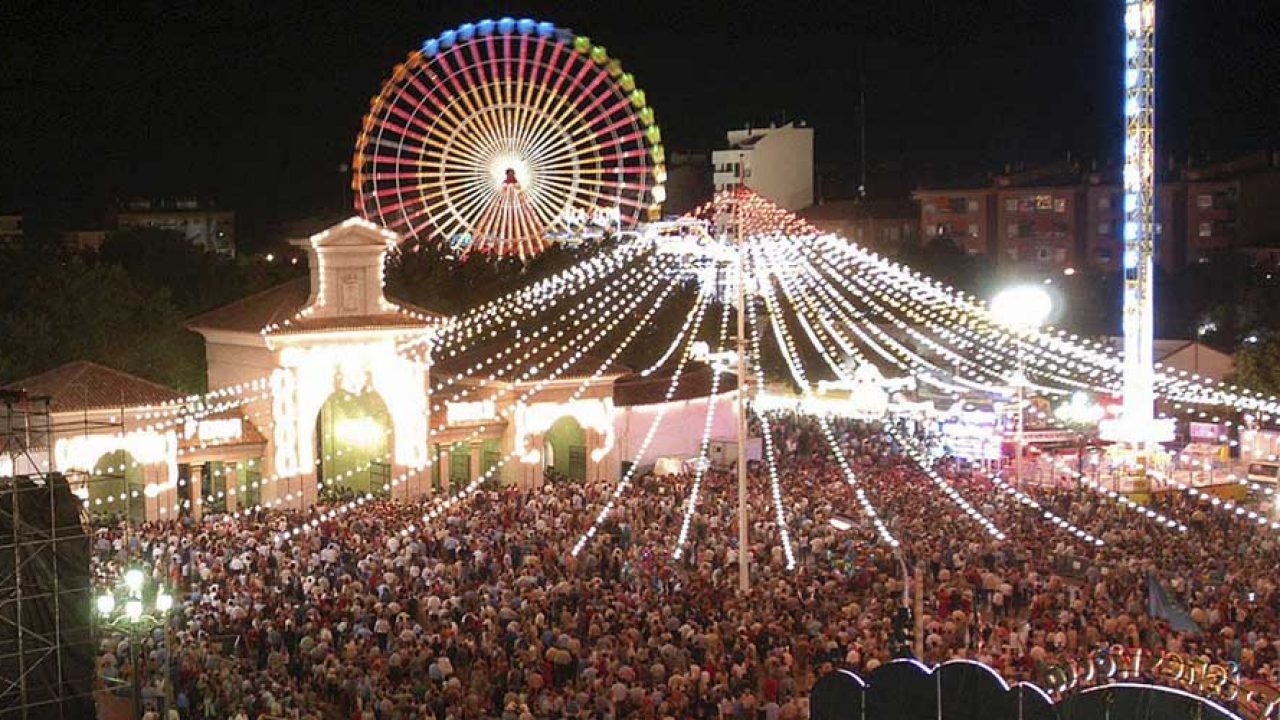
Family-Friendly Activities
La Feria is a celebration for all ages. Children can enjoy a variety of activities, from amusement rides and games to puppet shows and workshops designed to educate and entertain in equal measure.
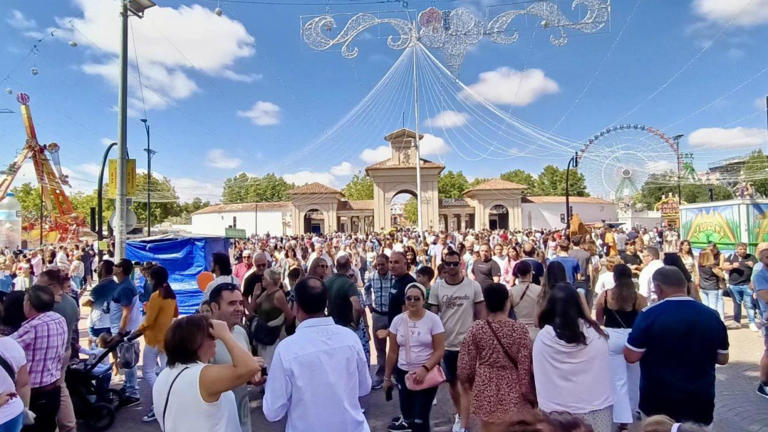
La Feria de Albacete is more than just a fair; it's a vibrant celebration of life, culture, and tradition. Its origins, deeply rooted in history and spirituality, provide a backdrop for a festival that embraces modernity while honouring its past. Whether you're drawn by the allure of traditional festivities, the thrill of bullfighting, the joy of music and dance, or simply the desire to experience the warmth of Spanish hospitality, La Feria de Albacete promises unforgettable memories. As summer wanes, the magic of Albacete beckons, offering ten days of joy, reflection, and celebration in the heart of Spain. Why not put it on the calendar for next year?!
 2
Like
Published at 12:15 PM Comments (0)
2
Like
Published at 12:15 PM Comments (0)
A Day Out in Chulilla
Saturday, September 14, 2024
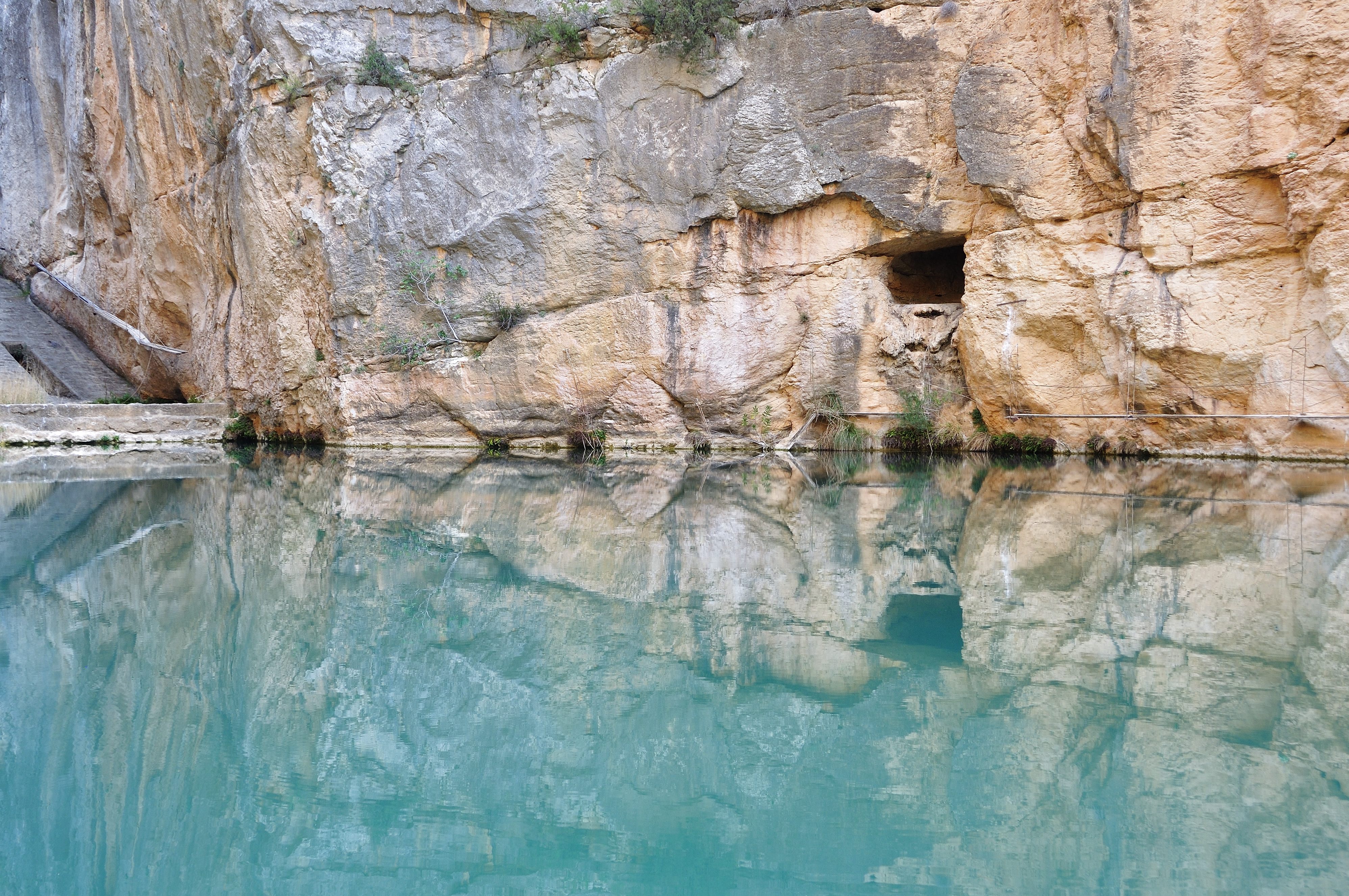
Chulilla is hidden at the foot of its Arab castle in a spot difficult to imagine: a lake surrounded by lofty limestone walls where the Turia River becomes a mirror. The raging river that once swallowed up loggers has now been tamed.
Chulilla is a picturesque village made up of white houses huddled on the slopes of Cerro del Castillo, next to the natural moat formed by the Turia River which flows through the canyon formed by 160 meter high limestone walls. This canyon is currently one of Spain's rock climbing sanctuaries, with more than 500 routes. Here, at the foot of the rock walls, just a 30-minute walk from the village, we come across Charco Azul (Blue Pool), a haven of calm waters that mirrors the beauty of this vertical, solid rock landscape.
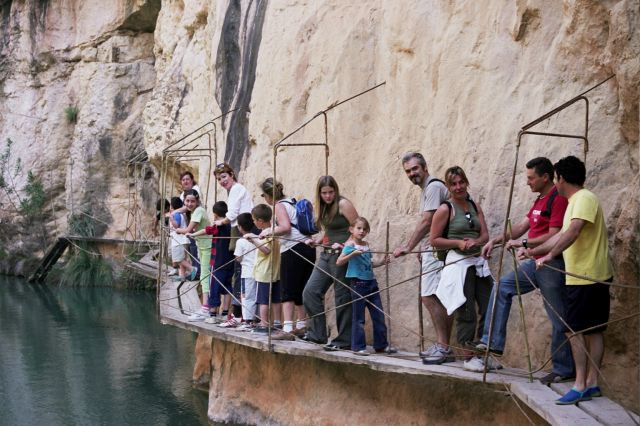
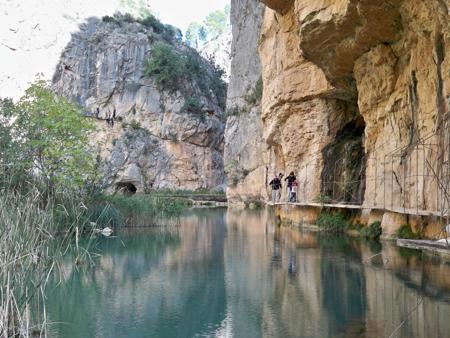 Charco Azul is an ideal place to have a refreshing swim in Summer and remember bygone days when the river flowed freely and unrestrained and logs cut in the mountains were floated downriver to the city of Valencia. Upon reaching this narrow canyon, where the lofty walls nearly touch each other, the logs became jammed and many loggers lost their lives trying to free them, and it is for this reason a chapel was built nearby. Charco Azul is an ideal place to have a refreshing swim in Summer and remember bygone days when the river flowed freely and unrestrained and logs cut in the mountains were floated downriver to the city of Valencia. Upon reaching this narrow canyon, where the lofty walls nearly touch each other, the logs became jammed and many loggers lost their lives trying to free them, and it is for this reason a chapel was built nearby.
The Charco Azul route is one of the nine self-guided routes that cross Chulilla's landscape. It starts and ends at Baronia square, the village's main square, and is well marked and very easy to follow and is even great for children.
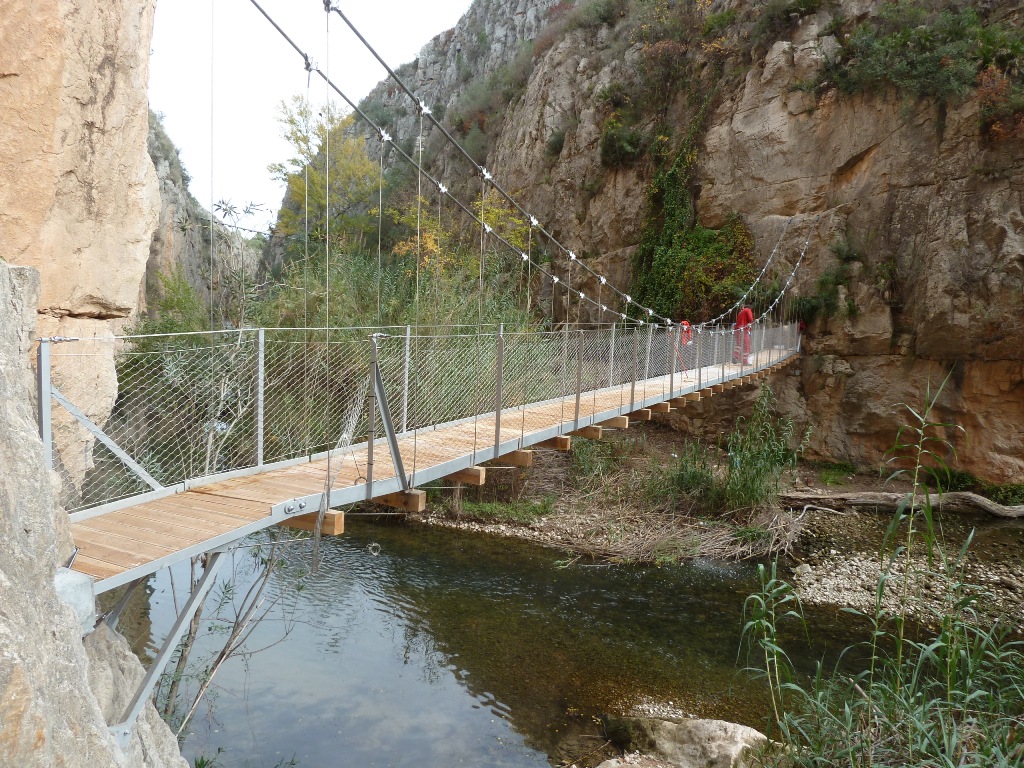 Another route worth taking is the Pantaneros route, which follows the journey taken by the labourers who in the 1950s worked on the construction of the Loriguilla reservoir to travel from the village of Chulilla. It is a 5-kilometer walk (one-way) along the edge of the Turia River's canyon walls and has the added thrill of crossing the canyon on hanging bridges. To regain your strength after the long walk, there is nothing better than an 'olla churra', a stew based on white beans, cardoons, potatoes, pork, and cold meats, typical of this Valencian region of Los Serranos (also known as La Serranía or Alto Turia). Another route worth taking is the Pantaneros route, which follows the journey taken by the labourers who in the 1950s worked on the construction of the Loriguilla reservoir to travel from the village of Chulilla. It is a 5-kilometer walk (one-way) along the edge of the Turia River's canyon walls and has the added thrill of crossing the canyon on hanging bridges. To regain your strength after the long walk, there is nothing better than an 'olla churra', a stew based on white beans, cardoons, potatoes, pork, and cold meats, typical of this Valencian region of Los Serranos (also known as La Serranía or Alto Turia).
Olla churra and other stews, such as olla de berzas (cabbage stew) or rice with wild boar, are served at the restaurant hostal El Pozo in Chulilla. Another interesting option, of more modern cuisine, is the Restaurant Las Bodegas, which also has a bar that serves tapas and lunches accompanied by wines under the Valencia and Utiel-Requena designations of origin. So if you happen to pass through Valencia take a moment to visit Chulilla and its wonderful Charco Azul.
 1
Like
Published at 2:24 PM Comments (0)
1
Like
Published at 2:24 PM Comments (0)
10 Beaches worth visiting in Spain
Friday, September 6, 2024
Spain's coastline and islands is peppered with spectacular beaches so I have decided to pull together some of the best I know and are definitely worth a visit...
1. Es Talaier (Ciudadela, Menorca)
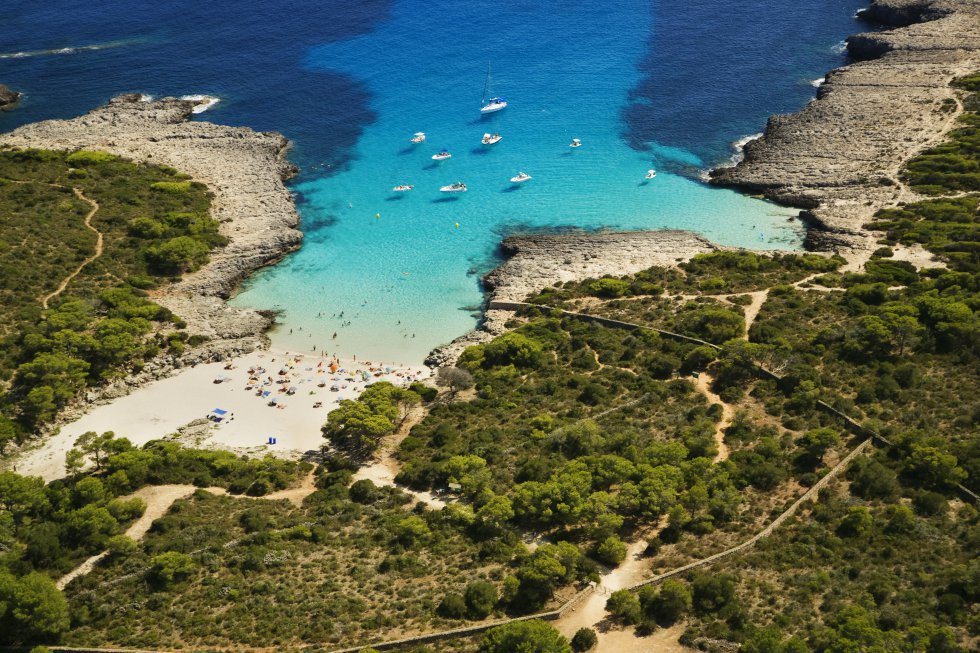
After a 15-minute walk from Son Saura, everything conspires to push the traveller into this voluptuous pool of translucent waters that shine under the bright sun. Its pine groves are seductive like snake’s eyes, and the beach is free of tourist boats.
2. Cala Fonda, Waikiki (Tarragona)
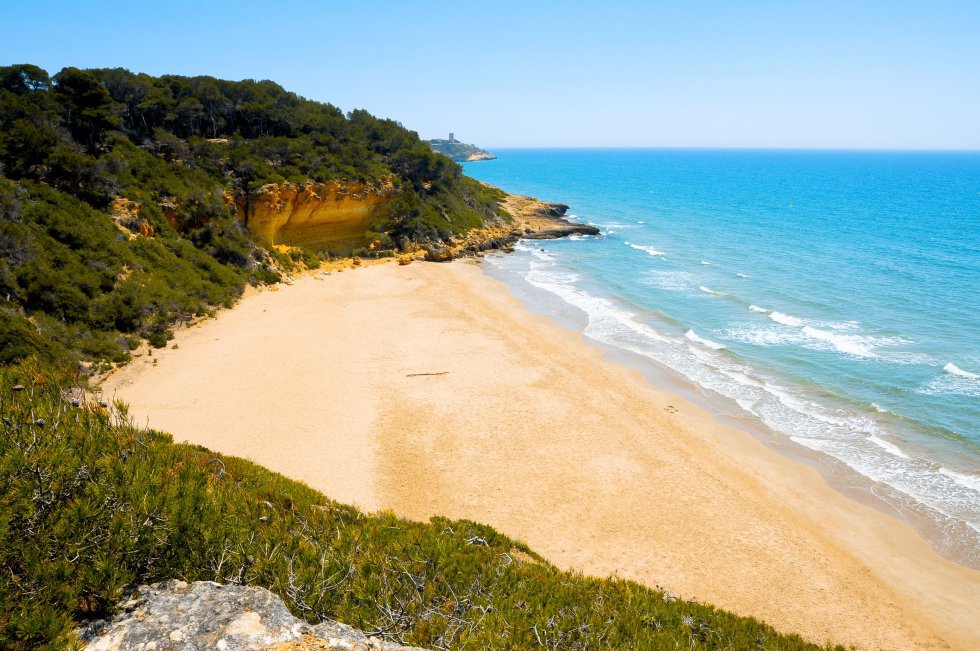
The proximity of a petrochemical compound only underscores the value of this Mediterranean relic. It is necessary to park at the restaurant Mirall d’Estiu, on Larga beach, and walk for two kilometers. The pine groves then give way to an uncomfortable final stretch before the actual beach is reached. Some walk about in the nude, others go for a swim. Everyone talks wonders about this place.
3. Escorxada and Fustam (Es Migjorn Gran, Menorca)
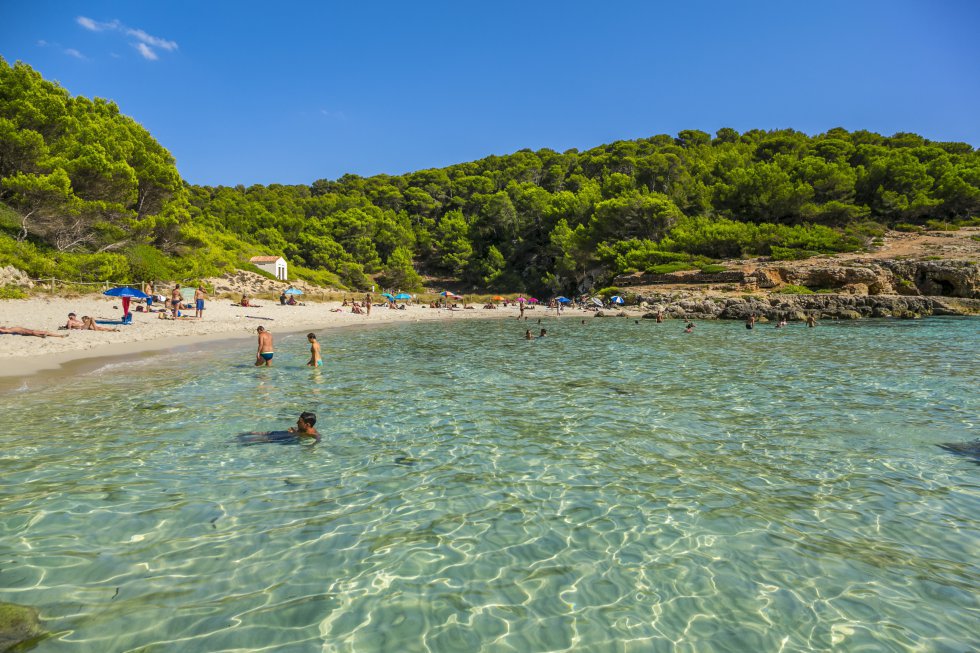
Water taxis were created for those who dislike walking. Taximar (www.menorcataximar.com), based in Cala Galdana, organizes trips to the remote coves of Escorxada and Fustam, with stops at Trebalúger and a couple of sea caves. The parasol-and-cooler-carrying traveler can then choose a beach to enjoy for the next five hours, until pick-up time. The cost of the service is €25.
4. La Granadella (Xàbia, Alicante)
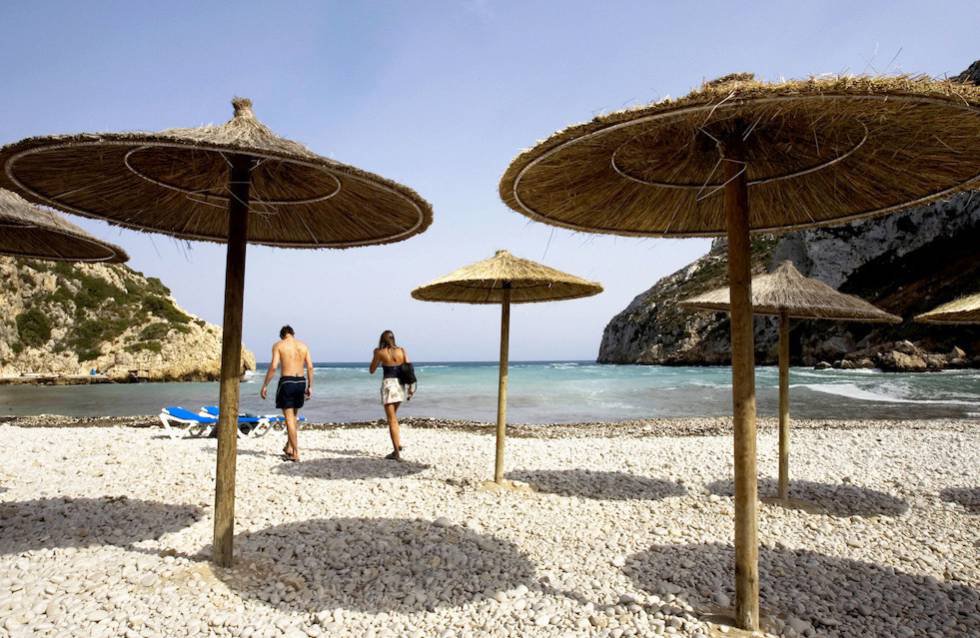
There is nothing quite like enjoying the majestic Mediterranean early in the morning outside high season, and to practice your swimming strokes as you listen to the rhythmic sound of the pebbles being swept by the waves. Sur restaurant (www.restaurantesur.com) has its own boat and vegetable garden.
5. Melide (Cangas de Morrazo, Pontevedra)
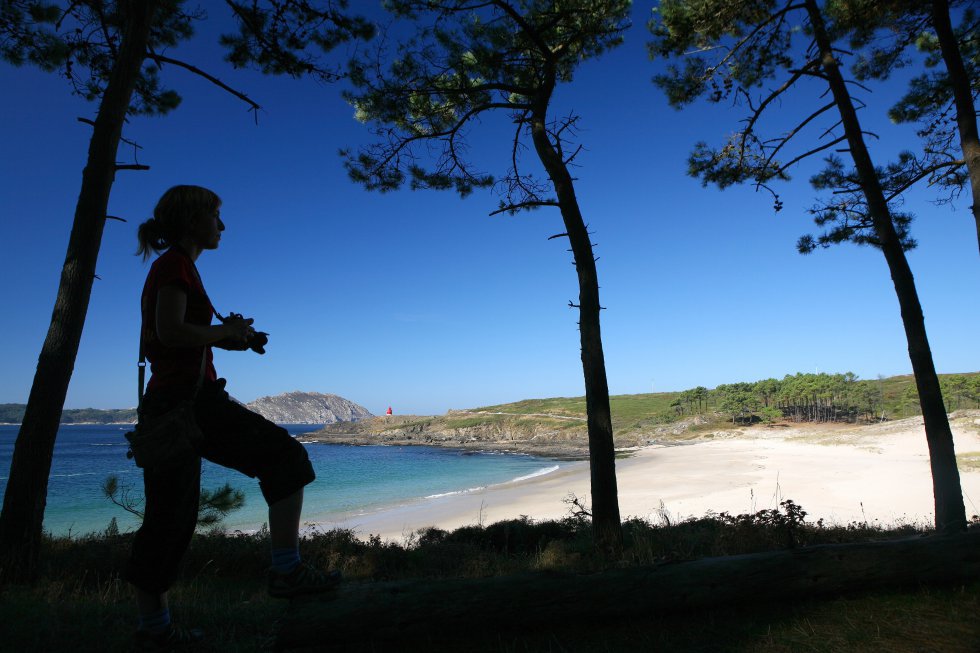
To say Melide is to evoke the Cíes islands: there are only three kilometers separating Melide from the national park, and no need to stand in line at the ship docks. Both share a creamy-colored sand, freezing waters and loads of pine trees. Its remote location ensures that the masses stay away. A foot trail begins in Donón and ends in Punta Subrido, home to Pedro Piñeiro’s beach bar.
6. Playazo de Rodalquilar (Níjar, Almería)
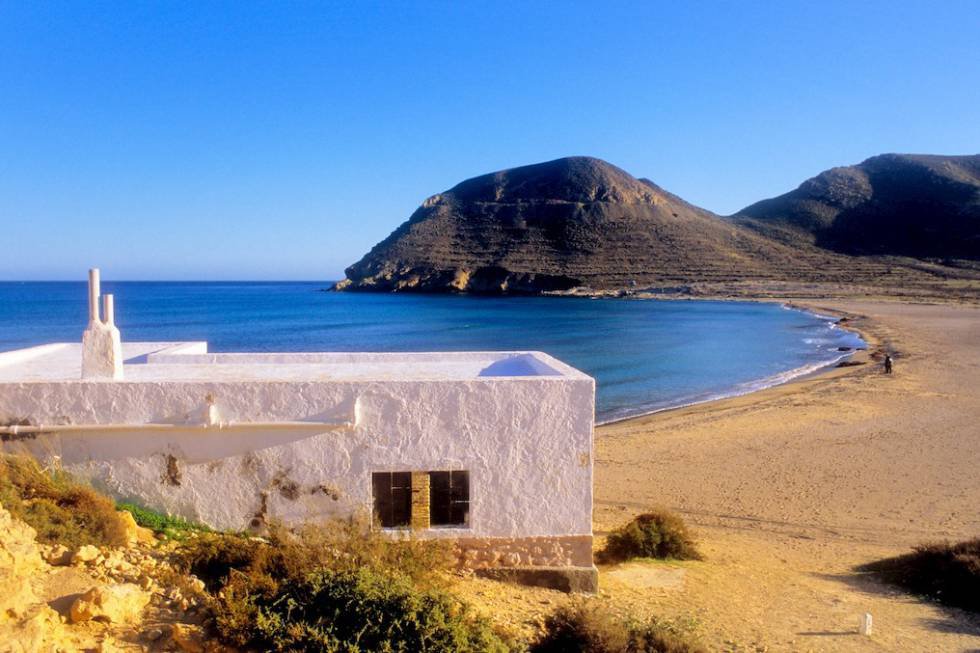
Located inside Cabo de Gata, this is a crowded beach (access is easy) but its sand is a joy to behold, and it is set against a cliff of such a pale yellow as to appear white. It was the filming location for the 2015 movie ‘Lejos del mar’ (or, Far from the sea), by Imanol Uribe. The Los Patios hotel is nearby (www.lospatioshotel.es). It is a good idea to walk the 1.4 kilometer trail from San Ramón castle to Cuervo cove.
7. Güí-Güí (La Aldea de San Nicolás, Gran Canaria)
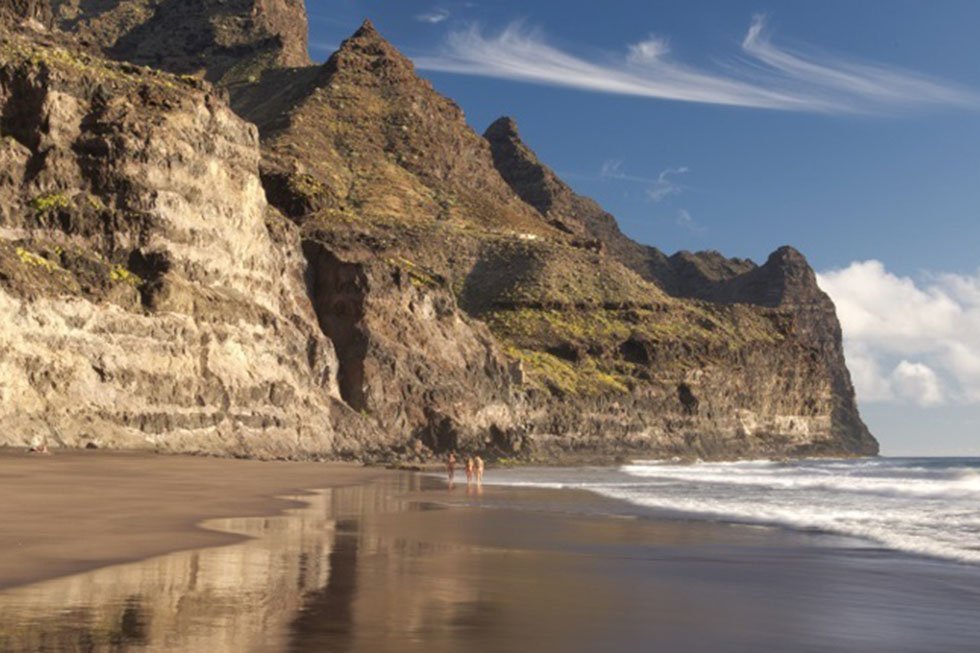
This is the beach at the end of the (Canary Islands) world. The two-and-a-half hour mountain trek from Tasartico is worth it (remember to bring at least two liters of water per trekker). Anyone who makes it to these two strips of sand with views on Mount Teide should be eligible for a certificate of achievement.
8. Aigua Xelida (Palafrugell, Girona)
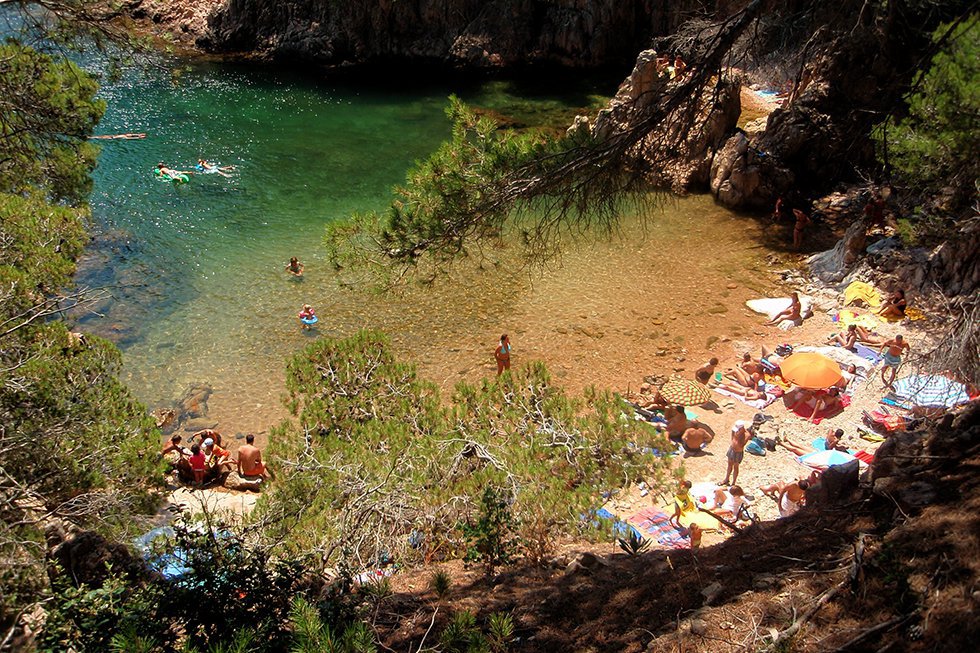
The pungent smell of the pine grove, its narrow shape, the fact that the nearby residential estate is nearly unnoticeable... Everything conspires to make us disconnect from the outside world. A plaque on the fisherman’s shack reminds visitors about the times when the writer Josep Pla spent time here, drawing inspiration from the coastline and the wind to write about a legendary, extinct Costa Brava that we may nevertheless explore in kayaks (www.kayakingcostabrava.com) from the homebase of Tamariu.
9.Xarraca (Sant Joan, Ibiza)
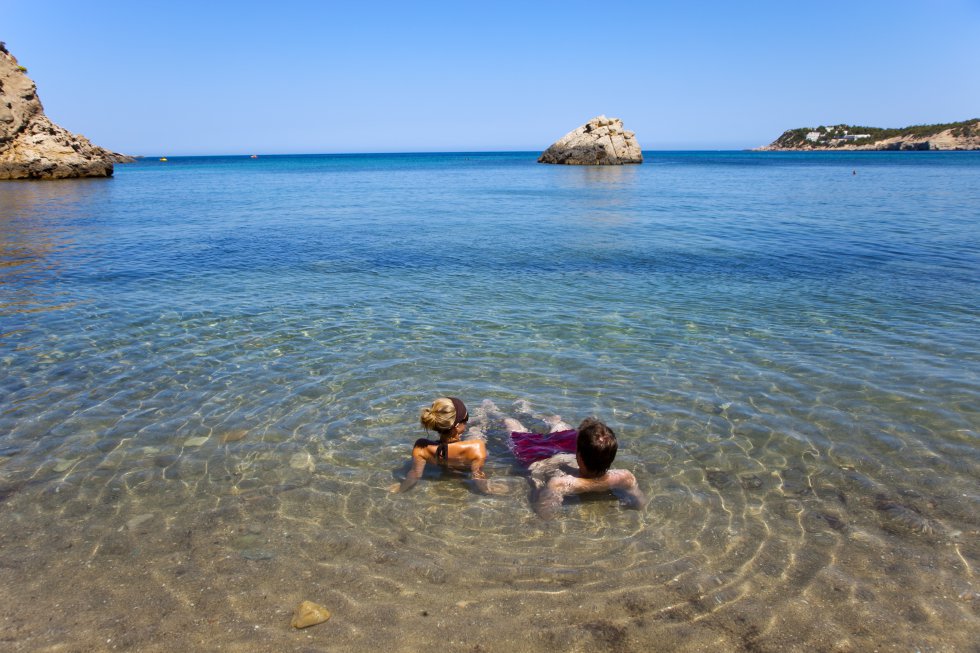
This cove in northern Ibiza is located next to the road, and its waters are of an arresting turquoise color. This is a pebble beach, meaning that it is good for snorkeling and paddle boats. Rising up from the water near the shore is Penya Grossa, a rock that doubles as a diving board, and the nearby Penya Petita, a small reef where swimmers stop for a break.
10. Barayo (Valdés / Navia, Asturias)
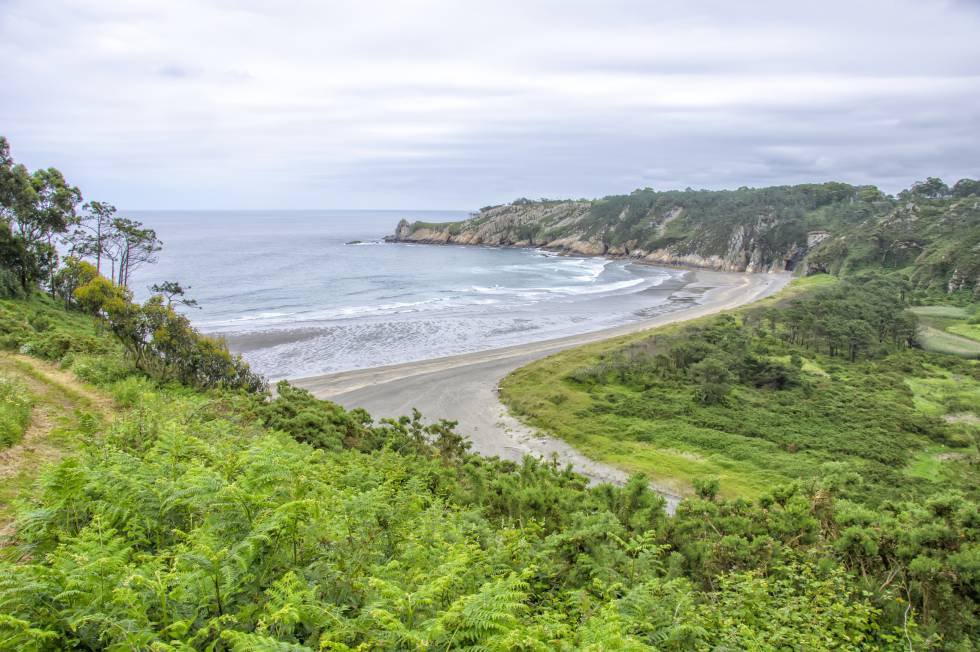
Anyone approaching Barayo from Navia will be treated to one of the parking lots with the most sublime views on the Cantabrian coast: salt flats, marshes, dunes, tall grass and cane fields, pine trees and eucalyptus on a cliff.
 3
Like
Published at 11:35 PM Comments (2)
3
Like
Published at 11:35 PM Comments (2)
Spam post or Abuse? Please let us know
|
|